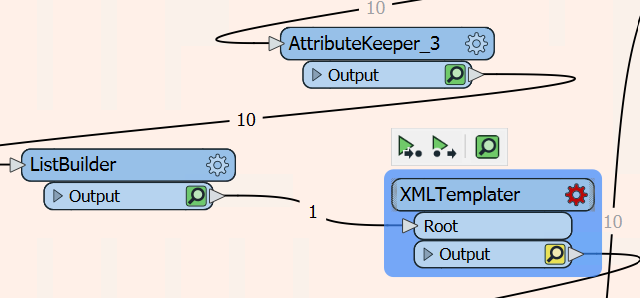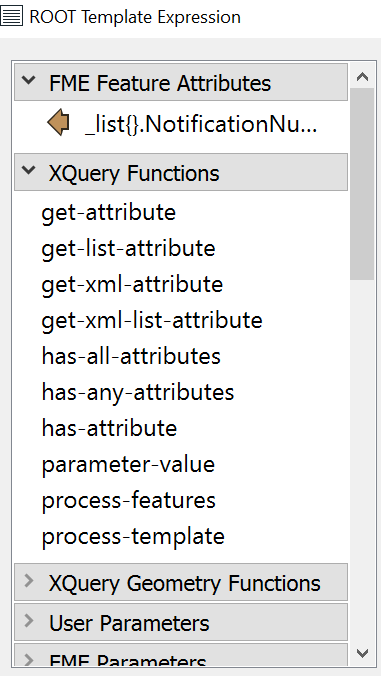Hi Everyone,
I have recently started with FME. I have a case where I have to format an XML from a list.
I am using XMLTemplater Transformer to build a request xml which looks like below
<soapenv:Envelope xmlns:soapenv="http://schemas.xmlsoap.org/soap/envelope/" xmlns:wnb="http://sample.com.au">
<soapenv:Header/>
<soapenv:Body>
<wnb:fetchNotificationDetails>
<!--1 or more repetitions:-->
<notificationNo>121</notificationNo>
<notificationNo>131</notificationNo>
<notificationNo>141</notificationNo>
</wnb:fetchNotificationDetails>
</soapenv:Body>
</soapenv:Envelope>
I am passing some ten notification numbers to a XML templater and they are coming out individually like below
<soapenv:Header/>
<soapenv:Body>
<wnb:fetchNotificationDetails>
<!--1 or more repetitions:-->
<notificationNo>301</notificationNo>
</wnb:fetchNotificationDetails>
</soapenv:Body>
</soapenv:Envelope>
<soapenv:Header/>
<soapenv:Body>
<wnb:fetchNotificationDetails>
<!--1 or more repetitions:-->
<notificationNo>302</notificationNo>
</wnb:fetchNotificationDetails>
</soapenv:Body>
</soapenv:Envelope>
I used a listbuilder transformer and then passed it to XMLTemplater .

What is the option I should select from the below to read a list to form request XML mentioned below

I want a single output from XML templater which looks like below
<soapenv:Header/>
<soapenv:Body>
<wnb:fetchNotificationDetails>
<!--1 or more repetitions:-->
<notificationNo>121</notificationNo>
<notificationNo>131</notificationNo>
<notificationNo>141</notificationNo>
</wnb:fetchNotificationDetails>
</soapenv:Body>
</soapenv:Envelope>
Any help would be appreciated. Thanks







